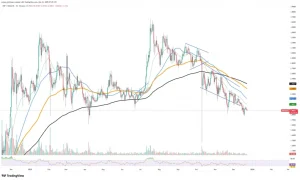India Set to Introduce ARC Token: A Stablecoin Anchored to Government Securities

India is preparing to launch the ARC Token, a pioneering stablecoin initiative backed by sovereign government securities, signaling a major leap toward integrating blockchain technology with the traditional financial system. Designed to maintain price stability and promote digital asset innovation, the ARC Token aims to merge the trust of government-backed instruments with the efficiency of decentralized finance (DeFi). This development could redefine how India approaches digital currency frameworks, bridging regulated finance and emerging blockchain ecosystems. The project reflects the country’s ambition to modernize payments, enhance liquidity, and strengthen investor confidence in the evolving digital economy.
A Transformative Step in India’s Digital Finance Journey
The introduction of the ARC Token represents a pivotal moment in India’s evolving financial landscape. Unlike cryptocurrencies that derive value from speculative demand, the ARC Token will be fully backed by Indian government securities, offering intrinsic stability and legitimacy. This design positions the token as a regulated, low-volatility digital asset, blending the advantages of blockchain efficiency with the credibility of sovereign backing.
By anchoring its value to government bonds, the ARC Token seeks to minimize price fluctuations while providing a reliable medium for payments, settlements, and institutional transactions. It underscores India’s growing emphasis on building a digital financial infrastructure rooted in trust, transparency, and accountability.
Stablecoin Backing and Financial Integrity
A key distinction of the ARC Token lies in its asset-backing mechanism. Government securities—recognized as one of the safest investment instruments—will serve as collateral, ensuring every token issued is supported by verifiable reserves. This approach addresses long-standing concerns around stablecoin credibility, which have often revolved around the lack of transparent asset backing in global markets.
The model mirrors a centralized stability protocol while preserving certain decentralized attributes such as on-chain verification and auditable reserve disclosures. This hybrid structure could make ARC Token a model of compliance-focused innovation, balancing financial safety with blockchain transparency.
Bridging Traditional Finance and Digital Assets
India’s decision to back a stablecoin with sovereign assets signals a broader effort to harmonize traditional finance with emerging digital ecosystems. The ARC Token could serve as a digital representation of secure government debt instruments, enabling new use cases in payment systems, interbank settlements, and corporate liquidity management.
Additionally, it may create opportunities for smart contract integration, allowing businesses and financial institutions to automate transactions tied to interest payments or asset transfers. By embedding tokenized government securities into blockchain infrastructure, India can establish a more efficient and programmable financial ecosystem without compromising regulatory oversight.
Regulatory Confidence and Institutional Adoption
The Indian government’s involvement in the ARC Token project is expected to instill strong confidence among financial institutions, investors, and regulators. Stablecoins have often faced scrutiny for their opaque governance and questionable asset reserves; however, a sovereign-backed model could eliminate much of this skepticism.
Banks and fintech firms may leverage the ARC Token for cross-border payments, liquidity management, and digital settlements, all while operating under a regulated and transparent framework. This approach could also lay the groundwork for future central bank digital currency (CBDC) integrations or interoperability between public and private digital tokens.
Economic and Strategic Implications
The ARC Token’s launch could bolster India’s position as a global leader in digital asset innovation. By combining the reliability of government securities with blockchain technology, India aims to establish a new benchmark for financial inclusion and technological advancement.
Economically, this initiative may reduce transaction costs, enhance payment speed, and improve access to secure digital assets for retail and institutional investors alike. Strategically, it strengthens India’s stance in shaping international conversations around digital finance governance, asset tokenization, and regulatory frameworks.
Conclusion
India’s forthcoming ARC Token underscores a forward-looking vision where trust, technology, and regulation converge. By backing a stablecoin with government securities, the nation is not merely introducing another digital asset—it is architecting a bridge between traditional finance and the decentralized economy.
If executed effectively, the ARC Token could serve as a blueprint for other nations exploring sovereign-backed digital currencies, highlighting how blockchain innovation can coexist with fiscal prudence. This initiative marks a significant stride toward a transparent, inclusive, and digitally empowered financial future for India.




